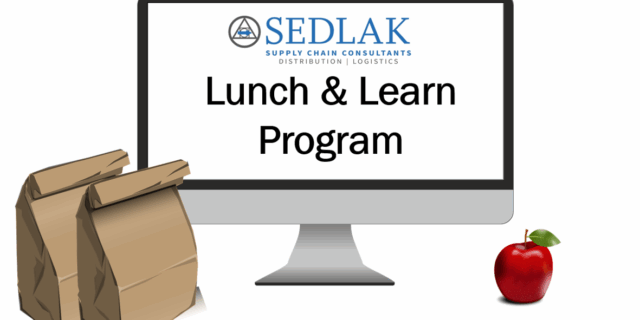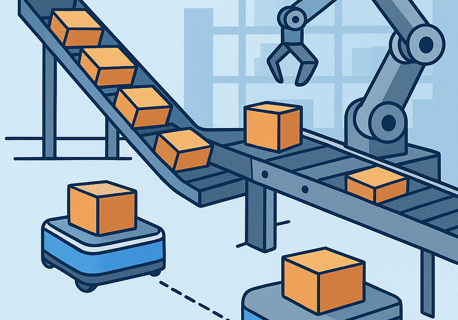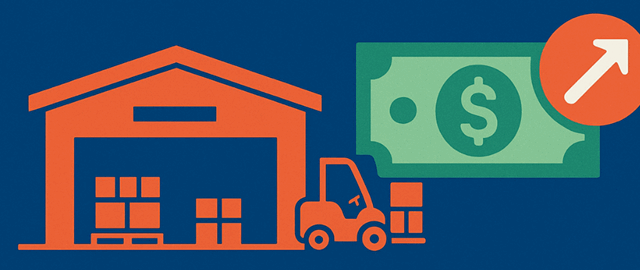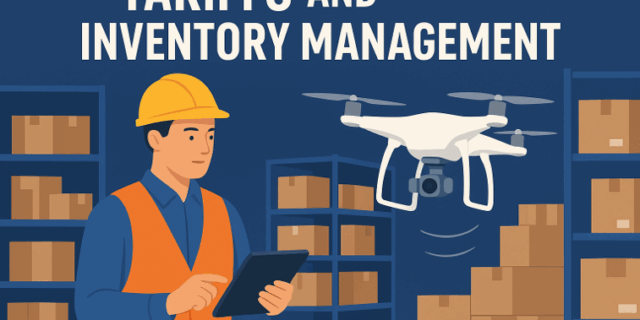Consolidated Services Centers – Before You Take the Plunge (Part 1 of 2)
September 25, 2017 By: Senior Management | Topics: Facility & Operation Design, HealthcareHealthcare organizations (HCOs) are constantly being tasked to shave costs, and the supply chain can be a good place to start. As the number of hospitals has shrunk and the number of Integrated Delivery Networks (IDNs) and Regional Purchasing Coalitions (RPCs) has grown, conversation has been devoted to supply distribution costs and how to reduce them.
Among many strategies are the concepts of “centralized distribution” and “Consolidated Services Centers.” The idea is to save money by cutting out “the middle man.” With distributor fees ranging from 3% to over 10%, an IDN or RPC spending $50 million or more on distributed supplies might expect some significant savings by taking on the singular responsibility of distribution or the dual responsibility of self-contracting and distribution.
In addition, if the IDN or RPC were large enough and geographically concentrated, another possibility is to build a Consolidated Services Center—a place where several supply chain functions are housed, saving the duplicative costs of performing those functions at each individual site within the IDN or RPC—the key benefits being both the aggregation of volume and a logistics component capable of providing service to the members.
Functions that might be centralized include:
- Commodity supply distribution
- Physician Preference Item inventory control and distribution
- Print management and production
- Record retention and storage
- Laundry services
- Linen pack preparation
- Durable Medical Equipment storage and distribution
- Pharmacy packaging and production
- Food Services cook-chill production and distribution
- Biomedical repair services
- Storage and distribution of disaster supplies
It should be obvious to even the most casual observer many things should be considered before leaping into the “consolidated waters.” Decisions regarding the expenditure of millions of dollars should be well studied and justified with extensive research and financial modeling because, once made, they are difficult to retract.
The following are questions for consideration (in two parts) and input from several respected industry experts: Jay Mitzel, retired supply chain executive formerly at TriHealth and Summa Health; Jim Francis, Chair of Supply Chain Management at Mayo Clinic; John Gaida of SVP of Supply Chain Management at Texas Health Resources; Bill Mosser VP of Materials Management at Franciscan Missionaries of Our Lady Health System, Bob Simpson, President and CEO of LeeSar; and Charlie Miceli VP Supply Chain and IS Operations at the University of Vermont Health Network.
Part 1: Organization and Purpose
What is your organization type?
Are you an IDN, a small RPC, or a large Alliance associated with a major Group Purchasing Organization? (I’m ignoring stand-alone community hospitals because (1) those entities are rapidly disappearing and (2) it is doubtful they could justify centralization.) For every organization type, there are specific considerations, many of which are addressed with the ensuing questions. The biggest difference between IDNs and RPCs/Alliances is the question of management and the ability to drive participation and compliance across what is likely to be voluntary membership.
What is your operation/management structure?
Are you highly centralized, moderately centralized or decentralized? The answer to this question will tell you a lot before you ever take the plunge. If there is a single bottom line to be managed against and a single decision-making structure, the chances of success will be greater than if decision-making is decentralized among several bottom lines. This is where bigger is far from better. If you are a huge mega-IDN with a distinctly decentralized decision-making style, your chances of getting and keeping buy-in (not to mention compliance) are far less than a smaller IDN with tight decision-making and accountability.
What is your geography?
Logistics plays an important role. For every possible type of centralized activity, distribution of the output is required, and for each of these there is an accompanying optimal radius. This is where the experts are needed.
Several years ago I worked at an IDN that wanted to build a central laundry service completely across the state from the point of use locations. I costed out the activity and deduced it would virtually double linen processing costs while compromising service and quality. (The idea was the brainstorm of an inept VP of supply chain who has long since been booted out of healthcare.) The laundry was built, and my projections were proven. Today, the distribution costs for many of the individual facilities exceed the total delivered cost prior to centralizing the laundry.
What functions will you centralize and what do you hope to accomplish?
The most obvious reasons for centralization are to improve quality and service while decreasing costs.
Bill Mosser: This may include reducing product handling (“touches”), providing a one-stop shop for clinical and non-clinical entities in the system, and increasing the ability to standardize.
However, simple distribution of commodity items, for example, is not so simple when you really study it. Other functions, such as putting in a pharmacy “assembly line” or centralizing the sterile processing function require specialty expertise and must conform to laws and regulations.
Jay Mitzel: Twice in my career, I’ve made the decision to deploy a Consolidated Distribution Center (CDC) because the organization needed space in their main campus. On both occasions, I did a careful and thorough analysis of all the costs associated with the opportunity, and was able to find an acceptable building for a pittance. On both occasions the organization saved substantial money, although you need to be patient, tenacious and take the long term approach. You do not reap the economies you expect immediately.
Why do you want to do these things yourself?
Be honest. One of our experts (who shall remain unattributed for obvious reasons) said, “These things are usually built around a single individual rather than doing what the organization needs/wants. You get someone who is passionate about it, sells the idea internally, and they do it – only to wake up one day and the person leaves and the organization is left scratching their head saying, ‘Why did we do this?’”
Jim Francis: It’s important to understand the scope of your proposed CSC. Is it just supply chain management or a true consolidated service center for multiple shared service activities? Make sure your business case and value proposition are clearly defined.
What are the alternative uses of the money?
Any centralized function will likely have significant start-up costs. An organization’s senior leadership must not only analyze the costs and benefits associated with what it wants to do, but also the costs and benefits for alternative uses of that same money.
For example, spending $1 million to equip and staff a centralized Sterile Processing plant (it would actually cost much more) to return $1 million savings every year has a 1-year return on investment. However, suppose with half that money you could add two Purchased Services experts, buy a contract management system, and a purchased services data base tool to save $5 million a year for the next five years. What would be the best use of your money?
John Gaida: There are way more important initiatives that supply chain leaders can spend their time growing/creating that have a much higher return – reducing implant cost, growing/creating a non-acute business (physician’s offices, ASC’s, imaging centers, long term care facilities, etc. And if you really just have to do this [CDC], then joint venture with someone who knows how to do it and run it for you!
In Part 2 of this series we delve deeper into areas around core competencies, costing, and business sustainability.
Sedlak’s healthcare solutions help providers, distributors, and suppliers optimize supply chain operations, balance cost-service trade-offs, and pursue intelligent growth strategies. Our expertise across industries enables us to add value quickly and enable clients to meet the shifting challenges of the healthcare industry. To learn more, fill out the Contact Us form below.






